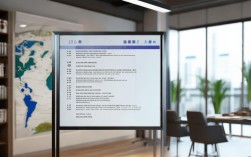在日常生活中,我们常常会听到“been there”这个口语表达,它看似简单,却蕴含着丰富的语境和情感,这个短语通常用来表达“经历过某事”“到过某地”或“感同身受”的含义,是英语母语者高频使用的日常用语之一,无论是分享经验、表达共鸣,还是略带调侃的语气,“been there”都能在不同场景中灵活运用,成为沟通中的“润滑剂”。

“Been there”的核心含义与使用场景
“Been there”的字面意思是“去过那里”,但在实际使用中,它早已超越了地理层面的描述,更多指向对某种经历、状态或情境的熟悉,根据语境的不同,它可以表达多种含义:
表示“有过类似经历”
这是最常见的用法,用于分享个人经验,让对话更具共鸣。
- A: "I'm so stressed about the final exam, I haven't slept for three days."
B: "Oh, been there. Last semester I pulled an all-nighter cramming for physics. Just take deep breaths, you'll get through it."
(A:“期末考试压力好大,我已经三天没睡了。”
B:“哦,我懂,上学期我为了物理考试通宵复习,深呼吸,你会撑过去的。”)
这里的“been there”传递的是“我也经历过这种压力”,既回应了对方的情绪,又给予了鼓励。
表达“感同身受”的共情
当他人描述某种情感或困境时,“been there”可以快速拉近心理距离,表达理解。
- "My dog just passed away, and I feel empty."
"I'm so sorry. Been there. It takes time, but the pain will ease."
(“我的狗刚去世,我感觉心里空落落的。”
“真遗憾,我懂这种感觉,时间会冲淡痛苦的。”)
它不仅是“经历过”,更是“我懂你的感受”。
略带调侃的“老手”语气
在轻松或略带自嘲的场景中,“been there”可以用来表示“我早就尝试过,结果你懂的”。
- "I think I'll try to fix the leaky faucet myself."
"Good luck with that. Been there, ended up with a flood in the bathroom."
(“我想自己试试修漏水的水龙头。”
“祝你好运,我试过,结果浴室淹了。”)
这里带有一丝幽默,暗示“这条路不好走,你三思啊”。
“Been there”的常见搭配与语气变化
“Been there”的灵活性还体现在它可以与其他词组合,形成更丰富的表达,同时通过语调、重音或附加词传递不同情绪:
| 搭配形式 | 含义与示例 | 语气倾向 |
|---|---|---|
| Been there, done that | “做过,早就不新鲜了”,表示对某事非常熟悉,甚至有点厌倦 | 自信、略带骄傲或敷衍 |
| Example: "He thinks he's the first to discover this band? Been there, done that. I saw them in a tiny bar 10 years ago." | ||
| Oh, been there | 单独使用时,常表示“我懂”“我经历过”,语气温和 | 共情、理解 |
| Example: "My toddler threw a tantrum in the supermarket." "Oh, been there. It's mortifying, but you'll survive." | ||
| Been and gone | 强调“某事已经过去,不必再提”,带有“翻篇”的意味 | 释然、轻微不耐烦 |
| Example: "I still regret quitting my job without a backup plan." "That's been and gone. Focus on what's next." | ||
| Not been there, not done that | 反向使用,表示“没经历过,不懂”,与“been there”形成对比 | 真诚、谦虚 |
| Example: "How do you manage to run a marathon?" "Honestly? Not been there, not done that. Still training for my first 5K!" |
使用“Been there”的注意事项
虽然“been there”是高频口语,但使用时需注意语境和分寸,避免误解:
-
避免显得傲慢
当搭配“done that”时,如果语气过于强势,可能会让对方觉得你在炫耀,面对新人请教工作问题,说“Been there, done that”可能显得不够耐心,改为“Oh, I’ve handled similar projects before. Here’s what worked for me”会更友好。 -
区分共情与敷衍
在他人表达负面情绪时,“been there”需要配合语气或后续行动,否则可能被理解为“随便说说”,比如朋友失恋时,仅说“Been there”显得冷漠,加上“I know how hard it is. Want to talk over coffee?”会更真诚。 -
注意文化差异
在非英语母语环境中,直接翻译“我去过那里”可能无法传达口语中的情感,中文里“我懂”或“我经历过”更贴近“been there”的共情含义,而非字面地理描述。
相关问答FAQs
Q1: “Been there, done that”和“Been there”有什么区别?
A: “Been there, done that”是“been there”的延伸,语气更强,强调“不仅经历过,而且早就熟悉,甚至觉得无聊”,常带一点自嘲或炫耀;而“been there”更中性,核心是“有类似经历”,侧重共鸣或分享,情绪色彩更灵活。
Q2: 如何用“been there”安慰遇到困难的朋友?
A: 使用时可以结合具体场景,让对方感受到真诚的理解。“I know you're overwhelmed with this project—been there. What helped me was breaking it into small steps. Want to try that together?” 这样既表达了经历,又提供了实际支持,避免空洞的安慰。











